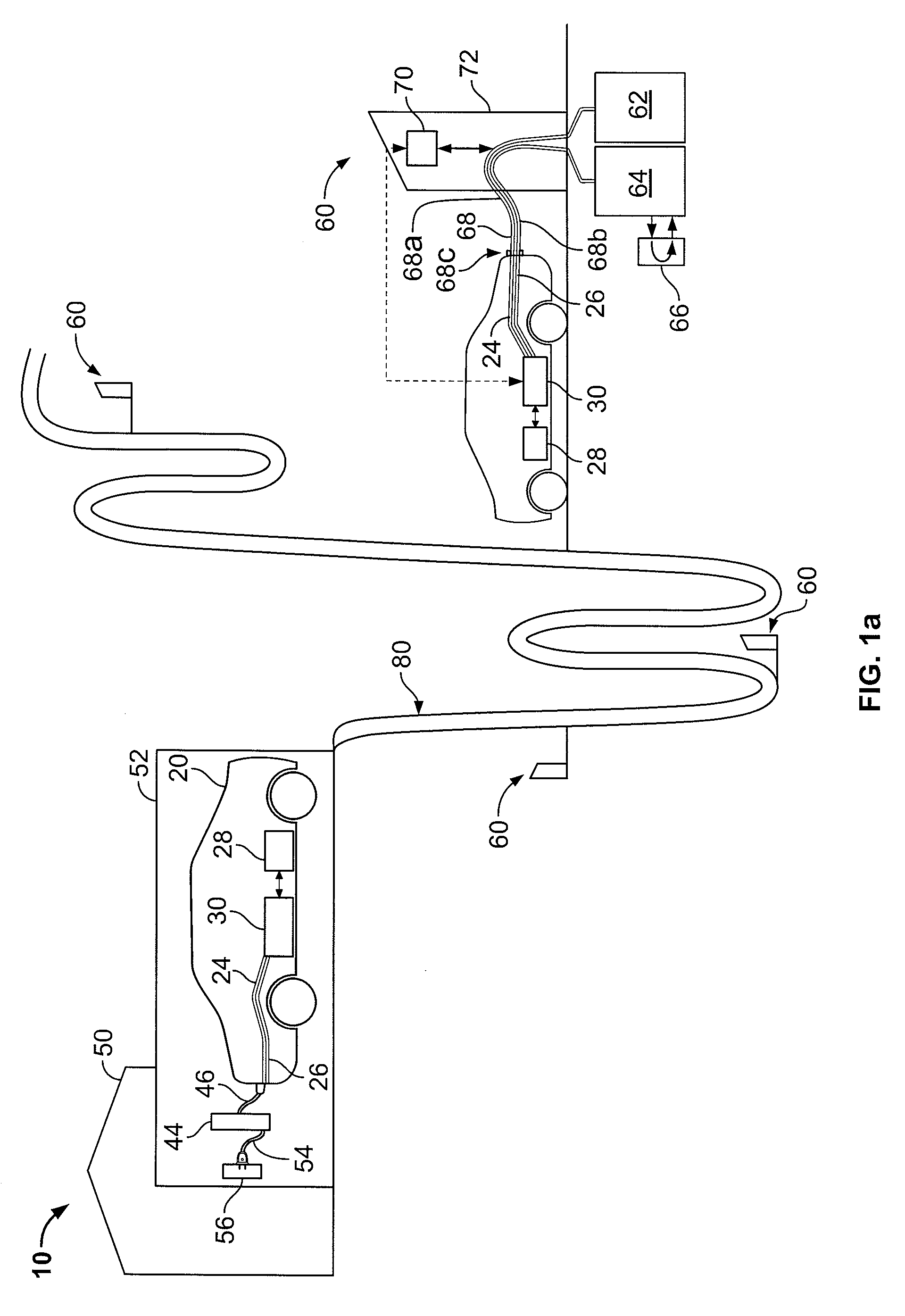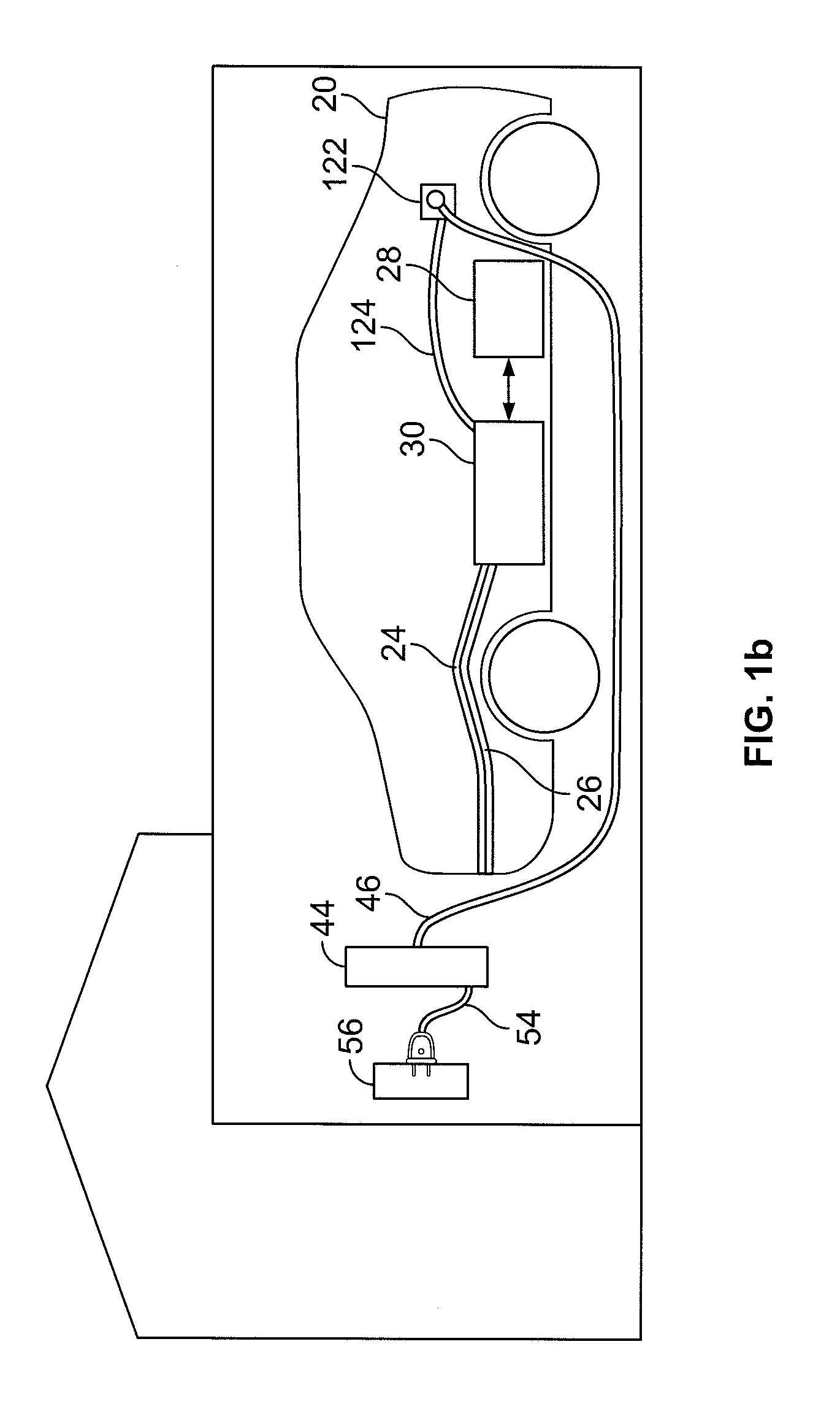System and method for recharging electric vehicle batteries
a technology for electric vehicles and battery cells, applied in battery/fuel cell control arrangements, process and machine control, instruments, etc., can solve problems such as increasing the amount of battery energy per vehicle, preventing electric vehicle users from accurately planning the actual transportation range of electric vehicles, and running out of electric vehicle batteries. the effect of range anxiety
- Summary
- Abstract
- Description
- Claims
- Application Information
AI Technical Summary
Benefits of technology
Problems solved by technology
Method used
Image
Examples
Embodiment Construction
[0022]Because the predictable range of an electric vehicle is difficult to determine and because increasing the practical energy density in large electric vehicle batteries is progressing slowly, increasing the availability of rapid roadside charging may encourage acceptance of pure electric vehicles. Roadside as used herein is defined as being any location that is accessible off a public roadway. For example, all gas stations accessible to the public are considered as being roadside according to the definition of roadside used herein. Combining the availability of rapid roadside charging with overnight charging, which itself does not reduce range anxiety because it does not extend the range of a vehicle in transit, may further increase the convenience and appeal of pure electric vehicles. Broader acceptance of pure electric vehicles may achieve economies of scale that may make electric vehicles and the underlying energy used to charge electric vehicle batteries dramatically less co...
PUM
 Login to View More
Login to View More Abstract
Description
Claims
Application Information
 Login to View More
Login to View More - R&D
- Intellectual Property
- Life Sciences
- Materials
- Tech Scout
- Unparalleled Data Quality
- Higher Quality Content
- 60% Fewer Hallucinations
Browse by: Latest US Patents, China's latest patents, Technical Efficacy Thesaurus, Application Domain, Technology Topic, Popular Technical Reports.
© 2025 PatSnap. All rights reserved.Legal|Privacy policy|Modern Slavery Act Transparency Statement|Sitemap|About US| Contact US: help@patsnap.com



